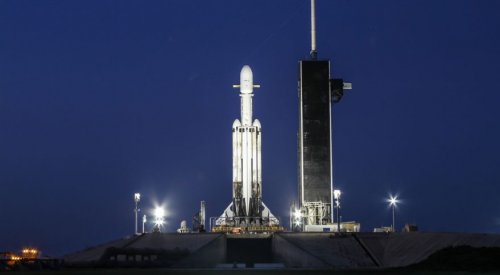The Oct. 25 request for information asks companies to submit a “statement of capability” by Nov. 19.
WASHINGTON — The Air Force has officially kicked off a new study of the U.S. launch industry in preparation for the next major procurement of national security launch services projected for 2025.
In a request for information (RFI) posted Oct. 25, the Air Force Space and Missile Systems Center announced the start of a National Security Launch Architecture study to be led by Col. Russell Teehan, SMC’s portfolio architect.
The study is an effort to gain deeper insight into the launch industry’s capabilities and planned investments as the Air Force begins to lay out future requirements for the next phase of the National Security Space Launch (NSSL) program. The Air Force currently is evaluating proposals from launch providers for the NSSL Phase 2 Launch Service Procurement and will select two winners in 2020. The new study would influence how the Air Force sets up Phase 3 of the program, expected to begin in 2025.
Plans for a space launch industry study in preparation for NSSL Phase 3 surfaced in June when Air Force leaders pushed back on a House Armed Services Committee proposal to allow more than two companies to win Phase 2 contracts. According to an Air Force white paper circulated on Capitol Hill, the National Security Launch Architecture study will “shape development initiatives and inform the Phase 3 acquisition strategy for future president’s budget submissions.”
The Air Force has insisted that any changes to the launch procurement strategy should be pushed out to Phase 3 to “maintain the integrity of past, current, and future source selections,” the white paper said.
The Oct. 25 solicitation asks companies to submit a “statement of capability” by Nov. 19. Areas of interest are industry developments in launch, on-orbit maneuverability and on-orbit servicing projected for 2025 and beyond.
The first National Security Launch Architecture industry conference is being planned for early December “as an opportunity for contractors to present responses in an open forum or in one-on-one sessions,” according to the RFI.
One of the priorities in future procurements of launch services is to make sure the industry can support the military during conflicts when space could become a theater of war and U.S. satellites would come under attack, according to the RFI. One of the anticipated demands will be for fast-response launch services.
In future procurements, “all components of space weapon systems, including national security space satellites, ground and launch elements will be required to successfully support warfighter needs under demanding hostile environments,” said the RFI.
To improve the resilience of satellite systems, the military plans to deploy larger layers of proliferated low and medium Earth orbit constellations. Ground mission command, control and data dissemination systems are being upgraded with enhanced cybersecurity. SMC says the launch and transport side of the business “has not kept pace with the other space enterprise elements and drives the need for this RFI.”
Concerns about launch market
The RFI lists several questions the Air Force wants launch providers to answer regarding market forecasts and anticipated customer demands. The questions suggest the Air Force worries about the impact that commercial downturns could have on the financial health of the industry and its ability to support government demands for access to space at competitive prices.
Companies are asked to lay out what changes in the commercial and civil launch sectors they expect between now and 2030 with regard to market demand and customer requirements. The RFI asks launch providers for estimates of where they expect future revenue to come from.
The information collected from the industry would help the Air Force better understand the economics of the launch business and the potential scenarios that would lead a company, for example, to increase the prices charged for national security launch services if commercial business takes a dive.
The RFI seeks estimates from launch providers on what size commercial market they anticipate for rapid launch and rapid mission planning, and what classes of payload size they would be able to accommodate. It also asks them to suggest an “ideal model” for national security space launch contracts. The proposed models should balance the Air Force’s goals to have competition, mission assurance, and assured access to space.
Some questions are specifically aimed at satellite operators and developers. The Air Force is interested in what non-existing launch and orbit transfer capabilities they wish were available. Other questions in the RFI are about possible commercial interest in rapid satellite deployment, what orbits and payload classes would be most beneficial to commercial business, and what changes in satellite and constellation design and launch vehicle integration would be necessary to realize this capability.
- Crunch time: Rocket companies in all-out battle for Air Force award
- Air Force official shakes things up at SMC
- SN Military.Space | Who’s who in the national security space workforce • Doubts raised about cost of Space Force • U.S., Brazil to share space data
- SN Military.Space | Space reorganization: Reform fatigue already? • SMD Symposium underway in Huntsville • DARPA soon to announce Blackjack winners
- SN Military.Space | Space reforms near decision point • SMC Commander: Procurement slow but not broken • Mattis downplays impact of Trump trade wars
Share with your friends

(0) Comments
This article comments are currently no :(